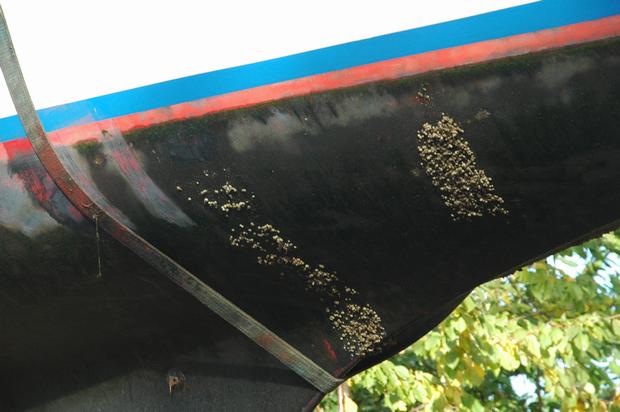That means CO2 emissions rise accordingly.
Most marine organisms that attach themselves to hulls – for example mussels and algae – can easily be scraped off, but barnacles literally grow into the surface and form dense calcium deposits underneath the paint. The most common method used to prevent fouling is to mix the paint with a poisonous substance. The poison is then released slowly from the painted hull to discourage invaders, and eventually ends up in the water to the detriment of other marine organisms. This is how for example tributyltin oxide (TBTO), a biocide used in the 1980s and 1990s, led to a global environmental disaster. TBTO was banned worldwide after it was discovered that the use was making oysters and similar animals infertile.
About 90 per cent of the anti-fouling hull paints used today are based on copper oxide, causing large amounts of copper to be released into the seas and oceans.
"This type of environmental effect cannot be accepted in the long run," says Emiliano Pinori of the University of Gothenburg Department of Chemistry and Molecular Biology, who has found a new method. whereby the paint and the poison are modified so that the poison is kept inside the paint, minimizing the release of it into the water. Instead, the barnacle’s own ability to penetrate the paint is used. When the organisms attach to the surface, the poisoning begins.
"You can say that they dig their own grave in the paint," says Pinori.

Credit: University of Gothenburg
Zero emissions possible
The toxin used in the new type of paint is ivermectin – a molecule produced by the bacterium Streptomyces avermitilis. A good effect has been achieved with only one gram of ivermectin per litre of paint, or a concentration of only .1 per cent. The effect lasts for many years and can replace the copper currently used in hull paints. The research indicates that only very small amounts of the substance leach into the water.
"My research shows that the small amounts that are released are unrelated to the effectiveness of the method. This means that if we can eliminate the leaching completely, the effect will not be sacrificed. Zero emissions will be our next goal. We’re looking forward to continuing the development of this method within the EU project LEAF, Low Emission Anti-Fouling. It’s a three-year project that SP has been granted together with Professor Elwing’s group at the University of Gothenburg and other international partners," says Pinori.
Title of the doctoral thesis: Low Biocide Emission Antifouling Based on a Novel Route of Barnacle Intoxication





Comments